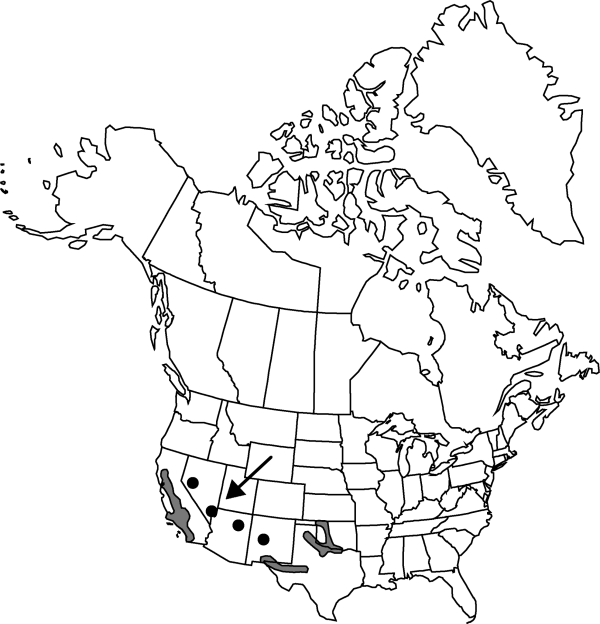Difference between revisions of "Atriplex argentea var. mohavensis"
FNA>Volume Importer |
FNA>Volume Importer |
Revision as of 20:02, 24 September 2019
Stems erect or decumbent, much branched, 3–12(–20) dm, forming clumps 3–10(–30) dm broad; branches obtusely to sharply angled, finely scurfy, white scurfy to glabrate. Leaves: petiole 2–21 mm on proximal leaves, distal ones sessile; blade 3-veined at base, ovate to lance-ovate, or deltoid-ovate, (10–)25–75 mm and often as broad, margin irregularly dentate or entire. Flowers of sexes intermixed in glomerules or staminate ones in distinct glomerules. Staminate flowers 5-merous. Pistillate flowers in axillary fascicles. Fruiting bracteoles sessile to subsessile, orbicular or cuneate-orbicular, mostly 3-veined, (3–)4–7 × 2–4 mm, united to middle, margin sharply dentate, faces with a few irregular, green projections or crests, or unappendaged.
Phenology: Flowering summer–fall.
Habitat: Dry or saline substrates
Elevation: above 1000 m
Distribution

Ariz., Calif., N.Mex., Nev., Okla., Tex., Mexico.
Discussion
Atriplex argentea var. mohavensis is a tall, bushy plant with tumbleweed proportions. Its morphologic differences, slight though they may be, are geographically based.
Selected References
None.